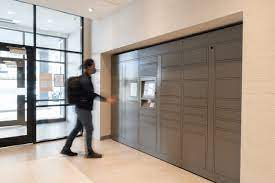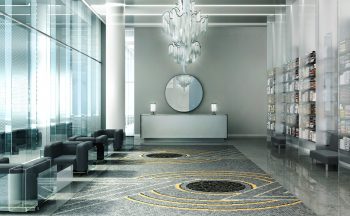 January 2024
January 2024
This isn’t about the latest in fashion trends, colours or textures. It isn’t about what furniture looks best. For those intrigued by these issues, there are more home décor and renovation programs and magazines than any single person can consume.
When it comes to high-rise living, we focus on what is unique to the high-rise living space.
One area is lobbies which have high traffic.
When replacing old, damaged or outdated flooring, nylon carpet is a reasonably priced and practical solution offering durability and requiring limited maintenance. Nylon carpet will hold the dirt that builds up in a hallway. A weekly vacuuming restores the carpet. Vinyl floors, also easy to maintain, require more effort and a wet mop.
Speaking of lobbies, less seating is more popular. This prevents groups from congregating in the space. Some lobbies have become overcrowded with furniture. Less furniture, more elegantly spread out, makes the lobby look more balanced and upscale.
Opening up the lobby lends itself to more effective use of space for services that support today’s lifestyle choices. Excess space can be used to provide better support for growing e-commerce. Space can be repurposed to store more incoming packages with designated areas for short-term storage of more sensitive deliveries of medication, groceries and perishable food.
Common areas can incorporate components to better support the digital world. Amenities can include space for private conversations and backdrops that look good on Zoom, Facetime, and Instagram selfies. Business lounges, areas where a small number of people can work with their laptops in a quiet space with privacy, are important to those who work from home. Of course, good internet service is a necessity if these spaces are to be utilized.
 No designs last forever. If you are hoping that today’s renovation will survive for 30 years, prepare to be disappointed. The reality is that furniture gets worn and walls damaged. How people adapt to their technology is constantly changing. Area renovations every seven to 10 years is typical, with minor aesthetic changes every couple of years. Spaces should be designed in anticipation of minor and non-structural changes to keep them vibrant and in demand.
No designs last forever. If you are hoping that today’s renovation will survive for 30 years, prepare to be disappointed. The reality is that furniture gets worn and walls damaged. How people adapt to their technology is constantly changing. Area renovations every seven to 10 years is typical, with minor aesthetic changes every couple of years. Spaces should be designed in anticipation of minor and non-structural changes to keep them vibrant and in demand.







